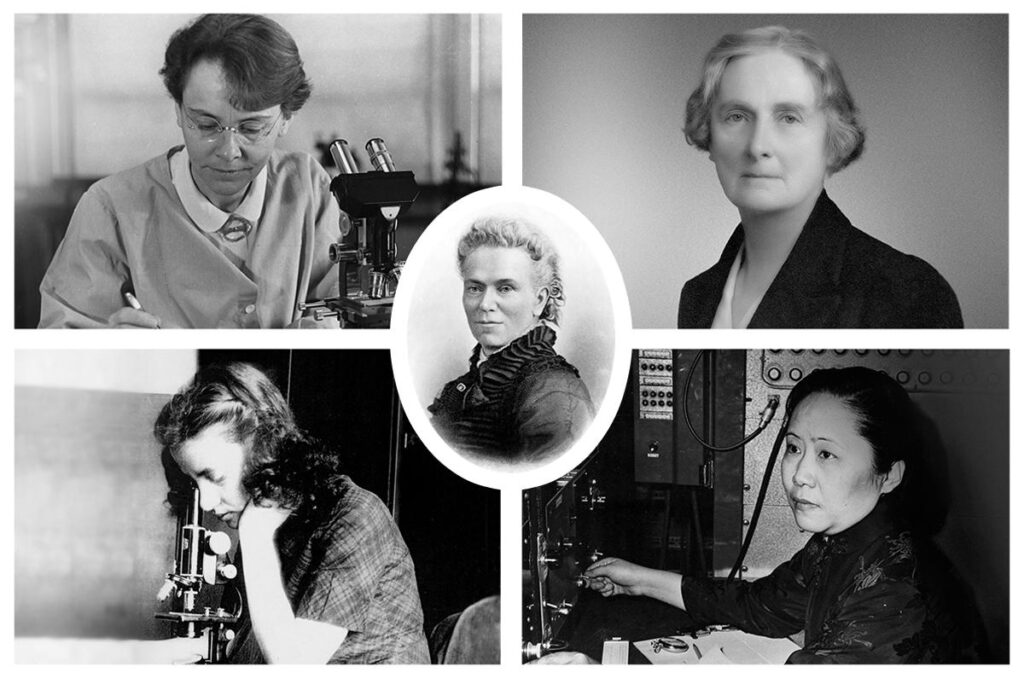In the male-dominated landscape of scientific achievement, the contributions of women have often been overshadowed or overlooked, a phenomenon that has become known as the “Matilda Effect.” Named after the early suffragist Matilda Joslyn Gage, this bias highlights the systemic undervaluation of women’s work in science and other fields, where their groundbreaking discoveries frequently remain uncredited or attributed to their male counterparts. This article delves into the origins and implications of the Matilda Effect, exploring how dominance and systemic bias have shaped scientific narratives, while examining the urgent need for a more equitable recognition of all contributors to knowledge and progress. As we uncover the historical context and modern repercussions of this effect, we aim to address the ongoing conversations around gender equity in science and the necessity for a paradigm shift in how we perceive and celebrate the achievements of women in STEM (Science, Technology, Engineering, and Mathematics).
Understanding the Matilda Effect and Its Impact on Womens Recognition in Science
The Matilda Effect refers to the systematic under-recognition of women’s contributions to science and academia, often attributing their achievements to their male counterparts. This phenomenon highlights a significant disparity in how female scientists are acknowledged within their fields. Despite their groundbreaking research and discoveries, many women have faced challenges in receiving credit, resulting in a skewed historical narrative that prioritizes male contributions. This effect is not just a relic of the past; it continues to permeate the scientific community, where women’s names are frequently overshadowed by their male peers. The implications of this bias are profound, affecting funding opportunities, publication rates, and overall representation in prestigious scientific roles.
Factors contributing to the persistence of the Matilda Effect include societal biases, implicit stereotypes, and institutional barriers. To better understand the disparity in recognition, consider the following points:
- Gender Bias: Historical stereotypes position men as the primary innovators, often dismissing women’s achievements.
- Collaboration Dynamics: Women frequently collaborate with male colleagues, leading to shared credit that diminishes individual recognition.
- Publication Patterns: Research indicates that journals favor male-authored papers, affecting visibility.
This lack of recognition not only distorts individual legacies but also perpetuates an environment where young female scientists feel undervalued and discouraged. Addressing the Matilda Effect is essential for fostering a more equitable and inclusive scientific community, encouraging future generations to thrive without bias related to gender.
Unpacking the Historical Context of Gender Bias in Scientific Achievement
The historical landscape of scientific achievement has long been marred by systemic gender bias, a phenomenon encapsulated in what is now known as the Matilda Effect. This term, coined by feminist scholar Margaret W. Rossiter, highlights the pattern of women’s contributions to science being overlooked or attributed to their male colleagues. Despite their vital roles in groundbreaking discoveries, female scientists often remain in the shadows, their accomplishments eclipsed by patriarchal narratives. This trend can be traced back to the Enlightenment era, when women’s intellectual capabilities were systematically dismissed. Over decades, societal norms solidified the belief that science was a domain reserved for men, perpetuating a cycle where female talent was undervalued and underreported.
To elucidate the impact of this bias, consider the following factors that have historically contributed to the exclusion of women from scientific acclaim:
- Societal Expectations: Traditional gender roles relegated women to domestic responsibilities.
- Institutional Barriers: Restricted access to higher education and professional opportunities for women.
- Recognition Inequality: A tendency to credit male colleagues for female scientists’ ideas and innovations.
To further illustrate this dynamic, the table below captures notable female scientists whose contributions were overshadowed:
| Scientist | Field | Key Contribution | Credited Male Colleague |
|---|---|---|---|
| Rosalind Franklin | Biophysics | DNA Structure Imaging | James Watson |
| Marie Curie | Chemistry/Physics | Radioactivity Research | Pierre Curie |
| Linda Buck | Neuroscience | Olfactory System Studies | Richard Axel |
Strategies for Promoting Gender Equality and Inclusivity in Scientific Fields
To dismantle the barriers perpetuated by the Matilda Effect, which often leads to women’s contributions in science being overlooked or undervalued, targeted strategies are essential. Institutions should implement mentorship programs that connect experienced female scientists with younger professionals and students. By fostering a culture of support and guidance, these programs can help combat biases and encourage women to pursue leadership roles. Additionally, establishing diversity hiring quotas can ensure that women and underrepresented groups are not just present but are actively included in decision-making processes, thereby cultivating an environment where all voices are valued.
Moreover, it’s vital to promote awareness through training sessions focusing on unconscious bias for all staff, aiming to change perceptions both in the workplace and beyond. Promoting collaboration between genders in research projects can also enhance inclusivity, allowing shared recognition of contributions. actively celebrating and showcasing women’s achievements through awards and public recognition can serve to inspire the next generation while challenging the outdated notion that science is a male-dominated field. Effective and transparent communication about such initiatives will boost participation and encourage a collective effort toward equality.
In Retrospect
the ‘Matilda Effect’ serves as both a historical lens and a contemporary critique of the scientific landscape, highlighting the systemic biases that have long undervalued women’s contributions to the field. As we reflect on the narratives surrounding groundbreaking discoveries and innovations, it becomes evident that the fight for recognition and equal opportunity remains ongoing. By acknowledging the contributions of women scientists and challenging the structures that perpetuate gender bias, we can foster a more inclusive environment that values merit over dominance. As society moves forward, embracing diversity in scientific discourse will not only enrich the pursuit of knowledge but also ensure that history accurately reflects the contributions of all its pioneers. The call for change is clear, and it is a responsibility that our institutions must embrace to foster a future where innovation knows no gender.
